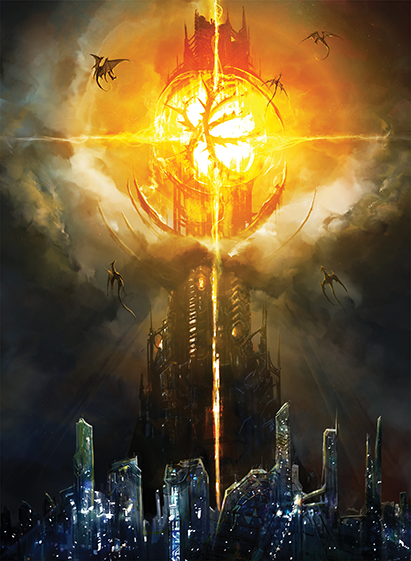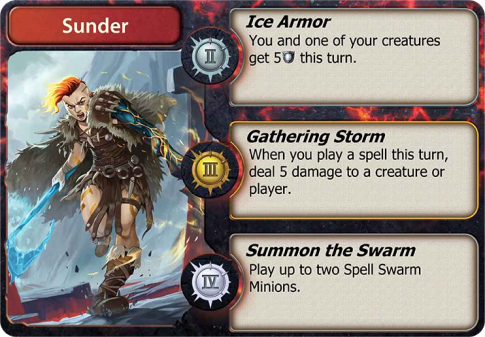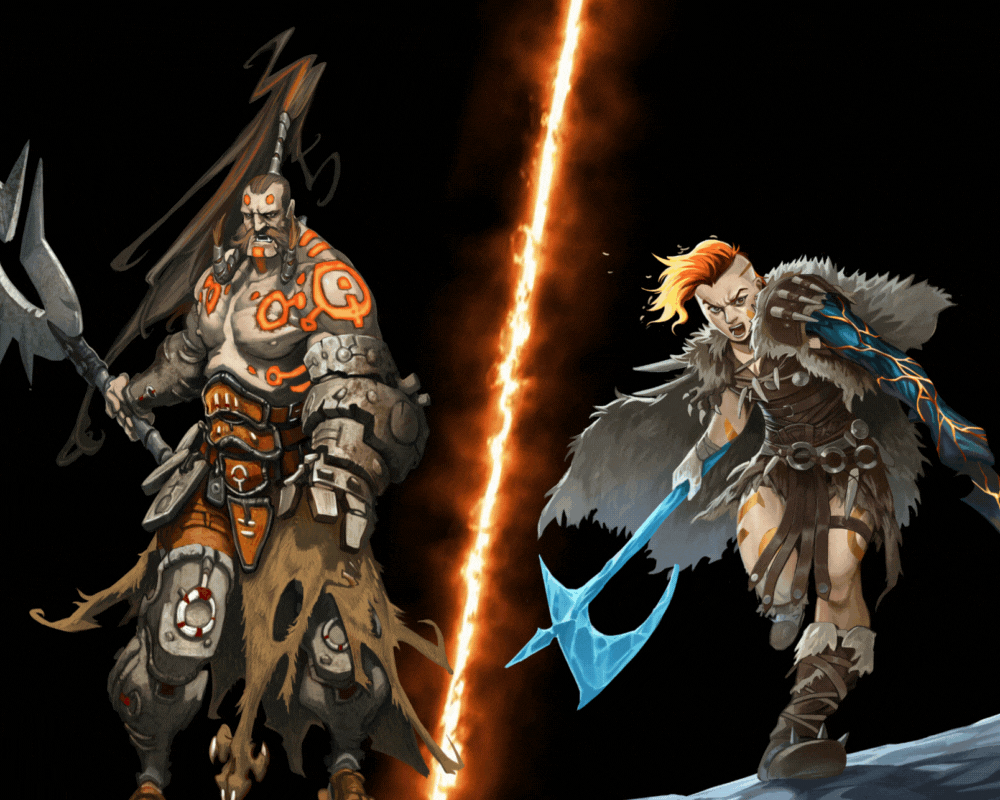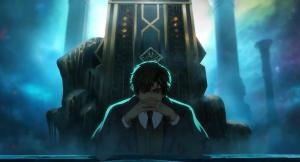The creators of two of the most popular tabletop card games of all time have brought back their SolForge card game with a new twist. This week, Stone Blade Entertainment will launch SolForge Fusion, a revitalized, physical version of the digital SolForge game created by Richard Garfield, the maker of Magic: The Gathering, and Ascension creator Justin Gary. The game utilizes algorithmically created “half-decks” that can be merged together to create a unique deck. Each deck is built around powerful Forgeborn characters that grow more powerful over time, with play involving attacking opposing players via one of five lanes.
Videos by ComicBook.com
The original SolForge was created from a place of mutual admiration. Back in 2011, Gary met Garfield during a PAX Dev conference. “At the end of the talk Garfield was giving, he gets asked a question, which is, “What’s your favorite game you’re playing right now?” And he says, “Ascension,” Gary told ComicBook.com in the interview. “And I literally jumped up in the back of the room and go, “Woo hoo!” Afterwards, the pair got to talking and decided to develop a digital card game, one that utilized systems like cards that leveled up.

While SolForge was built using concepts optimized for digital use, Gary approached Garfield several years later about making a physical version. “It was Richard’s other brilliant designs with KeyForge and the idea of an algorithmically generated deck that really unlocked it for me,” Gary said. “You could sell these things in chunks that helped you to create the idea of these level up cards and these kind of units that come together that made it seem possible to me.”
Although SolForge Fusion was born out of SolForge, Garfield and Gary had to strip out many parts of the original game due to the lack of a computer management system. That opened up room for more designs and tweaks beyond the addition of fused half-decks.”Players can manage more than a computer can,” Garfield explained. “It’s just, it has to be the right sort of thing that they’re managing. In the computer game, you took two actions and then there was an attack, and then your opponent did two actions and an attack. And just the small change of making it so that you do an action, then your opponent does an action, then you do an action, then your opponent does an action, then there’s an attack, makes it so it’s hard … That’s playing into the strength of face-to-face play. That would be worse with a digital game, but it works a lot better with paper.”
The designers also slimmed down the deck sizes, from 30 cards in a deck to 20 cards, and decreased the number of rounds before cards leveled up. Players also gave the ForgeBorn special powers that activated every time they leveled up, giving each deck more of a flavor and personality. “Really, the whole thing exemplifies this well known fact that, oftentimes, creative endeavors thrive on restrictions,” Garfield said. “When you’ve set out to make a game, you can do whatever you like and there’s very few restrictions, but when you’re taking something that exists and you’re translating into something else, there’s all these restrictions, these walls, but they turn out to be these opportunities for outside the box creativity.”

Another interesting aspect to SolForge Fusion is the use of algorithmically produced half-decks, continuing a design concept that started with Garfield’s KeyForge game. While KeyForge uses full procedurally created decks, SolForge provides customization options by letting players choose which half-decks they place together. “This aspect of the hybrid deck system where you actually are able to get this bit of customization, it allow you to exercise much more control over what you bring to bear in a tournament or a league,” Garfield noted. “People really wanted something like that in KeyForge, and I think that the cost of that would have been too high in KeyForge. It would’ve taken away what made it special. But this aspect of making that really single choice, “How do I want to combine these decks?”, is a really good compromise between the two systems of constructed and just purely procedural.” Gray also noted that the procedural decks would prevent dominant decks from emerging in SolForge Fusion’s meta-game, a common problem in standard trading card games like Magic: The Gathering and SolForge Fusion.
One other unique part of SolForge Fusion is that the game will include a branching storyline influenced by events held at various game conventions. “Players will influence not only the lore and the story, but also the cards and the way that they evolve in the future, “Gary noted. “We actually had our first storyline tournament at Gen Con and our game’s lore (found at our website) actually references the events that happened in the Gen Con storyline, including who has control of the SolForge currently.” The next storyline event will take place at PAX Unplugged, which will influence what happens in Set 2 and which cards will appear in Set 3. There are also variant cards in some of the deck that reveals new bits of lore and helps add to the overall story of the game.

SolForge Fusion will also be supported via a unique system, with stores sending out a champion deck to compete against other stores in physical and Tabletop Simulator play. “A store is going to pick their best decks and their best players and they’re going to play against every other store that participated to win a championship for their store. And so the whole store will get prizes based on the champion players that are representing those stores,” Garfield said. “And that’s a uniquely powerful thing that we can do here, where players can all feel ownership together and have the experience together, even if you’re not the best player in the store. “Our league structure is meant to incorporate more than just the top players.”
SolForge Fusion will officially launch on October 27th, with decks available at local card games. Stone Blade Entertainment plans to release multiple sets a year.









